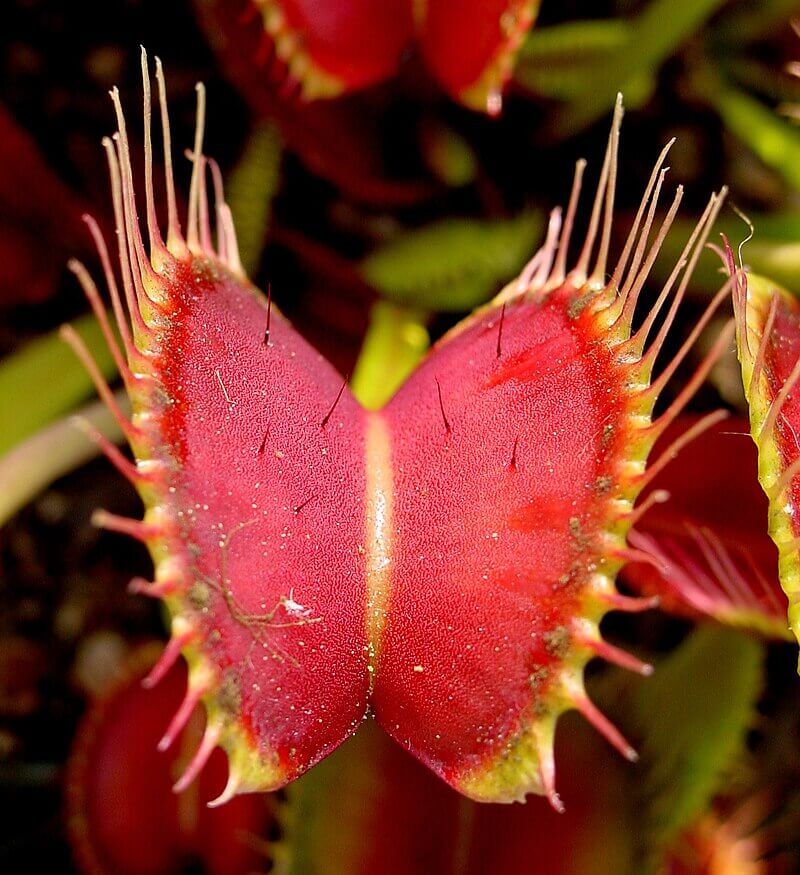Five Ways to Banish Fungus Gnats from Your Houseplants

Fungus gnats can quickly turn your indoor garden into a battleground. These tiny, flying insects seem harmless at first glance, but they can wreak havoc on your beloved houseplants if left unchecked. Not only do they nibble on tender plant roots, but they also lay eggs in the soil, leading to a vicious cycle of infestation.
Fortunately, there are several strategies you can employ to bid farewell to fungus gnats and reclaim your indoor oasis. Let’s explore five effective methods to eradicate these bothersome bugs.
1. Maintain Proper Soil Moisture Levels: Fungus gnats thrive in damp environments, making overwatered houseplants their ideal breeding ground. To disrupt their life cycle, strive to maintain optimal soil moisture levels for your plants. Allow the top inch of soil to dry out between waterings to discourage fungus gnat larvae from flourishing.
Additionally, consider using pots with drainage holes to prevent water from pooling at the bottom, further deterring these pests from laying their eggs.
2. Implement Natural Predators: Nature often provides its own solutions to pest problems, and fungus gnats are no exception. Introducing natural predators like predatory mites or nematodes into your plant’s environment can help keep the gnat population in check.
These beneficial organisms feast on fungus gnat larvae, effectively breaking the cycle of infestation. While they may not provide instant results, incorporating natural predators into your pest management strategy can yield long-term benefits for your houseplants.

3. Utilize Yellow Sticky Traps: Yellow sticky traps serve as a simple yet effective means of trapping adult fungus gnats. These bright yellow cards are coated with a sticky adhesive that attracts and immobilizes flying insects upon contact.
By strategically placing these traps near your infested plants, you can intercept adult gnats before they have a chance to lay eggs in the soil. Regularly monitor and replace the traps as needed to maintain their effectiveness in reducing the gnat population.
4. Apply Organic Soil Amendments: Certain organic soil amendments, such as diatomaceous earth or sand, can help deter fungus gnats by altering the texture and composition of the soil. Sprinkling a thin layer of diatomaceous earth on the soil surface creates a barrier that punctures the bodies of adult gnats and dehydrates them, effectively eliminating them from your plant’s vicinity.
Similarly, incorporating coarse sand into the top layer of soil can discourage gnats from laying eggs and disrupt their development. These natural remedies provide a chemical-free alternative for combating fungus gnat infestations while promoting a healthy growing environment for your plants.

5. Practice Good Plant Hygiene: Maintaining good plant hygiene is crucial for preventing and managing fungus gnat infestations. Remove any decaying plant matter, fallen leaves, or organic debris from the soil surface, as these provide ideal breeding sites for gnats. Regularly inspect your houseplants for signs of pest activity, such as yellowing or wilting foliage, and take prompt action to address any issues.
Quarantine newly acquired plants until you’re certain they’re free of pests, and avoid overfeeding them, as excess fertilizer can attract fungus gnats. By practicing good plant hygiene habits, you can minimize the risk of fungus gnat infestations and promote the overall health and vitality of your indoor garden.
In conclusion, fungus gnats may pose a nuisance to your houseplants, but with the right tactics, you can effectively eliminate them from your indoor garden. By maintaining proper soil moisture levels, employing natural predators, utilizing yellow sticky traps, applying organic soil amendments, and practicing good plant hygiene, you can reclaim your green haven from these pesky pests.
Remember to be persistent and patient in your efforts, as controlling fungus gnats may require ongoing management. With diligence and perseverance, you can enjoy a thriving indoor garden free from the troubles of fungus gnats.
Fungus gnats can quickly turn your indoor garden into a battleground. These tiny, flying insects seem harmless at first glance, but they can wreak havoc on your beloved houseplants if left unchecked. Not only do they nibble on tender plant roots, but they also lay eggs in the soil, leading to a vicious cycle of infestation.
Fortunately, there are several strategies you can employ to bid farewell to fungus gnats and reclaim your indoor oasis. Let’s explore five effective methods to eradicate these bothersome bugs.
1. Maintain Proper Soil Moisture Levels: Fungus gnats thrive in damp environments, making overwatered houseplants their ideal breeding ground. To disrupt their life cycle, strive to maintain optimal soil moisture levels for your plants. Allow the top inch of soil to dry out between waterings to discourage fungus gnat larvae from flourishing.
Additionally, consider using pots with drainage holes to prevent water from pooling at the bottom, further deterring these pests from laying their eggs.
2. Implement Natural Predators: Nature often provides its own solutions to pest problems, and fungus gnats are no exception. Introducing natural predators like predatory mites or nematodes into your plant’s environment can help keep the gnat population in check.
These beneficial organisms feast on fungus gnat larvae, effectively breaking the cycle of infestation. While they may not provide instant results, incorporating natural predators into your pest management strategy can yield long-term benefits for your houseplants.

3. Utilize Yellow Sticky Traps: Yellow sticky traps serve as a simple yet effective means of trapping adult fungus gnats. These bright yellow cards are coated with a sticky adhesive that attracts and immobilizes flying insects upon contact.
By strategically placing these traps near your infested plants, you can intercept adult gnats before they have a chance to lay eggs in the soil. Regularly monitor and replace the traps as needed to maintain their effectiveness in reducing the gnat population.
4. Apply Organic Soil Amendments: Certain organic soil amendments, such as diatomaceous earth or sand, can help deter fungus gnats by altering the texture and composition of the soil. Sprinkling a thin layer of diatomaceous earth on the soil surface creates a barrier that punctures the bodies of adult gnats and dehydrates them, effectively eliminating them from your plant’s vicinity.
Similarly, incorporating coarse sand into the top layer of soil can discourage gnats from laying eggs and disrupt their development. These natural remedies provide a chemical-free alternative for combating fungus gnat infestations while promoting a healthy growing environment for your plants.

5. Practice Good Plant Hygiene: Maintaining good plant hygiene is crucial for preventing and managing fungus gnat infestations. Remove any decaying plant matter, fallen leaves, or organic debris from the soil surface, as these provide ideal breeding sites for gnats. Regularly inspect your houseplants for signs of pest activity, such as yellowing or wilting foliage, and take prompt action to address any issues.
Quarantine newly acquired plants until you’re certain they’re free of pests, and avoid overfeeding them, as excess fertilizer can attract fungus gnats. By practicing good plant hygiene habits, you can minimize the risk of fungus gnat infestations and promote the overall health and vitality of your indoor garden.
In conclusion, fungus gnats may pose a nuisance to your houseplants, but with the right tactics, you can effectively eliminate them from your indoor garden. By maintaining proper soil moisture levels, employing natural predators, utilizing yellow sticky traps, applying organic soil amendments, and practicing good plant hygiene, you can reclaim your green haven from these pesky pests.
Remember to be persistent and patient in your efforts, as controlling fungus gnats may require ongoing management. With diligence and perseverance, you can enjoy a thriving indoor garden free from the troubles of fungus gnats.







